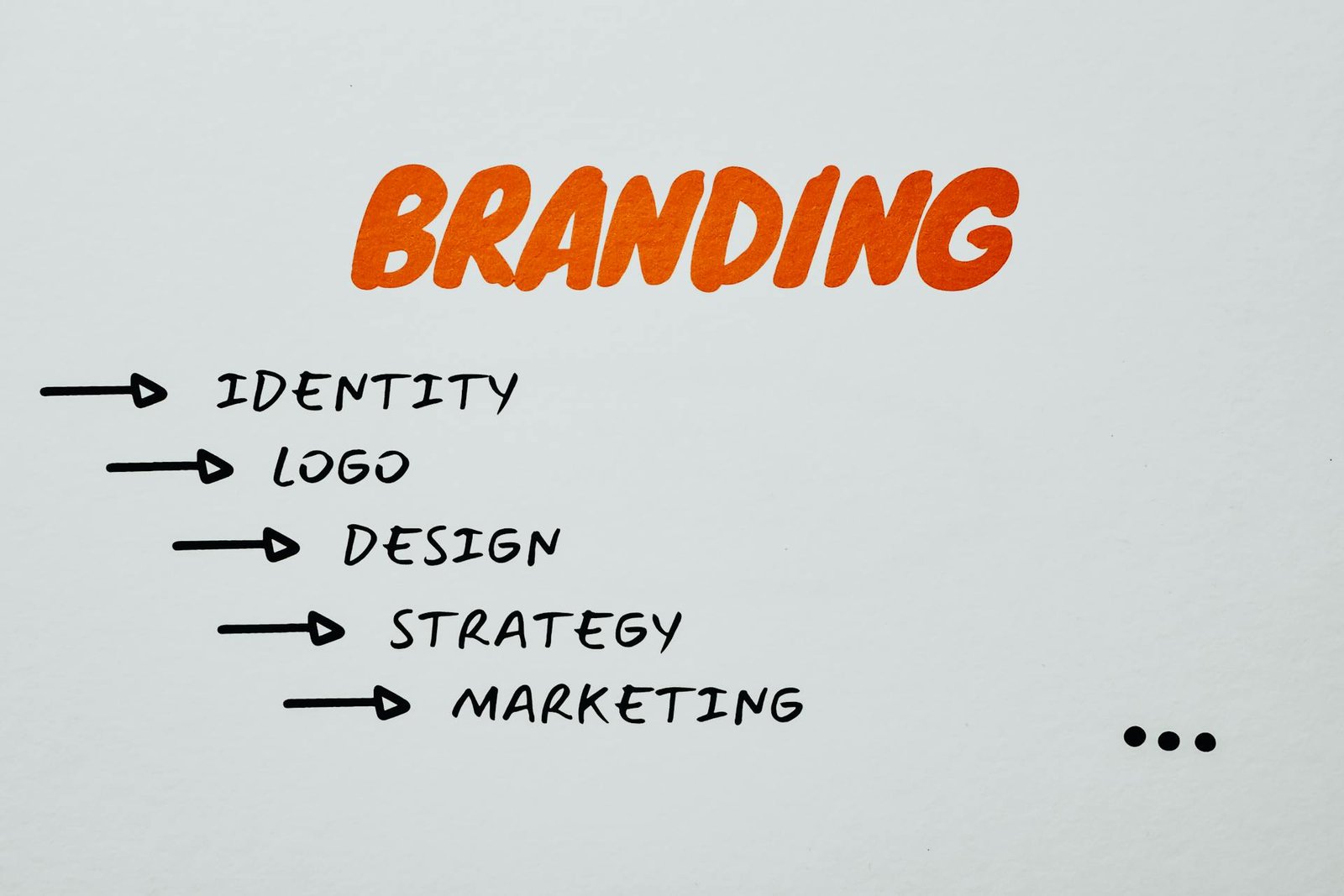Branding is beyond having a logo, but creating a consistent experience, a clear message, and a lasting connection that people can trust. A logo might help people notice a brand, but without meaning behind it, recognition doesn’t last. Moreover, most people now care more about what a brand stands for, what it says, and how it behaves across every interaction.
That shift makes trust a core part of branding. When trust is present, it becomes easier for people to connect, return, and share their experience. This article explores branding strategies that demonstrate how to build a trustworthy brand. It breaks down why brand trust matters more than appearance, and how it shapes identity, loyalty, and long-term success.
Why Brand Trust is the New Currency
Visuals once shaped how people saw a brand. A logo, color palette, and design helped create recognition. Though these elements still play a role in shaping first impressions, the focus of branding has gradually shifted toward meaning and emotional connection. A strong brand identity still matters, especially in recognition, but without clear values and consistent actions behind it, the impact fades quickly.
Now, as expectations continue to rise, trust has become the foundation of brand building. It influences how people feel, make choices, and decide whether to return. Because of this, brand trust now holds more value than appearance alone.
Businesses with clear values, honest communication, and consistent delivery tend to build stronger loyalty. Take Patagonia, for example, a brand that puts sustainability ahead of profit and keeps its customers informed. In the same way, Fenty led with inclusion from the start, proving that brand identity is more than packaging.
Likewise, Apple continues to build trust through performance, privacy, and a smooth user experience. Altogether, these examples show that trust is no longer optional. It’s what turns branding strategies into long-term growth. It’s what separates surface-level design from real connection.
Logos are Just the Start: What Else Shapes a Brand?
There’s more to a brand than how it looks. A logo might catch the eye, but what stays with people goes far beyond the logo. What defines a brand is how it sounds, what it believes in, and how it shows up during real interactions.
In addition to appearance, a strong brand voice, clear brand values, meaningful experiences, and consistency across every touchpoint help build lasting trust. Each of these elements shapes how the brand is remembered, how people respond to it, and whether that connection grows or fades.
1. Brand Voice and Tone
Brand voice is the expression of a brand’s identity through language. It shapes how messages are delivered and how they are received. In most cases, the voice is what gives a message its tone, rhythm, and meaning. Instead of standing apart from the brand, voice works as an extension of its personality. Whether in a short caption or a full article, the language should feel familiar and grounded.
As a result, people begin to recognize the voice without needing to see the logo. That consistency builds a deeper sense of connection. Beyond recognition, a strong brand voice creates a sense of trust. It allows the brand to speak clearly and stay aligned with its values. For example, a brand that aims to be warm and supportive should avoid cold or distant language.
In addition, the tone must reflect the mindset of the audience it serves. When the voice matches the brand’s actions, it shows confidence and purpose. Over time, this clarity helps people believe what they read, feel seen by the message, and remember the brand long after the conversation ends.
2. Mission and Values
Every brand is built on something. At the center of that structure are its mission and brand values. These are not empty phrases. They explain what the brand stands for, why it exists, and how it hopes to create real change. When these values are well defined, decisions become more focused and communication becomes more intentional.
In place of shallow promotion, a brand rooted in purpose stays steady and clear. That clarity supports the brand voice and brings depth to the message. Beyond the logo, people want to know what a brand believes in. A mission may appear in a headline, but it earns meaning through action.
For example, a brand that claims to care about inclusion or sustainability must reflect that in daily practice. When the brand voice echoes real values, it builds a connection that feels honest. As time passes, this alignment helps shape brand identity in a way that can be trusted. What begins as a message becomes a reputation, and that is what sets meaningful brands apart.
3. Customer Experience
Customer experience is where the meaning of a brand becomes real. Visuals may create the first impression, but lasting trust comes from how people are treated. Studies show that 71% of people are most likely to buy from brands they trust. This begs the question: how can trust be built via customer experience? A fast-loading site, a thoughtful response, or a straightforward refund process says more than any tagline can. This kind of experience reaches far beyond the logo.
Fortunately, it becomes a reflection of brand values in action and shows whether the brand truly respects its audience. Furthermore, a strong customer experience is part of the brand voice. It shows how a brand listens, communicates, and responds under pressure.
So, rather than relying on what is said in marketing, people pay attention to how the brand behaves when it matters most. Solving problems with care, following up with clarity, and making customers feel understood all reflect what the brand believes. Over time, these small moments build brand trust. They prove that the values shared in public are also lived out in private.
4. Consistency Across Touchpoints
Consistency is what holds a brand together. Without it, even the best messages begin to fall apart. From the website to the packaging, from the emails to the way support conversations are handled, every touchpoint should reflect the same standards.
Now, you have to understand that beyond the logo, people remember how a brand makes them feel, not only what it looks like. A consistent experience builds confidence and shows that the brand takes itself and its audience seriously. More importantly, consistency gives shape to the brand voice and helps reinforce brand values over time.
So, when a message is heard in one place and seen in another, it needs to sound and feel the same. For instance, if the brand speaks with warmth and clarity on social media, that same tone should carry into its customer support and product instructions.
By repeating this experience across all channels, the brand becomes more trustworthy and familiar. This kind of alignment strengthens identity, deepens trust, and moves the brand from being visually known to being emotionally remembered.
What Makes a Brand Trustworthy?
Brand trust is not built through words alone. It grows when actions match beliefs and when people experience that alignment consistently. While design might capture attention, trust is what holds it. Four key traits help shape how trustworthy a brand feels: authenticity, transparency, reliability, and consistency.
1. Authenticity: Authenticity begins with knowing what the brand stands for and staying true to it. This means avoiding trends that do not fit and choosing clarity over performance. When a brand shows up with honesty, people are more likely to connect with it.
2. Transparency: Transparency is the willingness to show what’s happening behind the scenes, especially when mistakes happen. Whether it’s sharing decisions, owning up to delays, or explaining changes, openness helps people feel respected. Silence during hard times often creates doubt, but clear communication builds credibility.
3. Reliability: Reliability means keeping promises and doing so with care. People return to brands that follow through, respond on time, and maintain quality over time. Even small moments like sending what was ordered or answering a message with clarity shows that the brand is dependable.
4. Consistency: Consistency across all areas strengthens the brand’s foundation. In addition to tone and messaging, every interaction should feel familiar and intentional. A steady experience builds confidence and shows that the brand is focused. As this consistency spreads across different platforms, it begins to shape a deeper sense of trust.
Among those platforms, social media holds a special place. It is often the first point of contact, and it sets the tone for everything that follows. For this reason, creating a strong and aligned presence online is essential. To explore how to do this well, see social media strategies that drive brand awareness & ROI.
How to Build Trust: Building Brand Trust From the Inside Out
Brand trust does not begin with campaigns or visuals. Instead, it starts within the organization. When the internal team understands what the brand represents and why it exists, trust becomes more than a surface message. It becomes something people can feel in every experience. For this reason, the way a brand operates behind the scenes often shapes how it is seen on the outside. Below are how to build brand trust from the inside out:
1. Involve your Team in Brand Culture
Trust cannot grow where people feel excluded. For this reason, involving the team in shaping brand values is essential. When people contribute to the core of the brand, they develop a sense of shared ownership. This connection leads to greater care in how the brand is represented.
However, involving your team goes beyond communication. It also means building the right environment where people feel supported and heard. Creating that type of culture begins with building the right team. If you’re looking for practical steps on how to shape that kind of team from the ground up, explore ways to build a winning team.
2. How Employee Advocacy Builds Credibility
People trust real voices more than marketing campaigns. For this reason, messages from within the brand often hold more weight than scripted content. When someone close to the work speaks about their experience, the message feels honest and grounded.
Moreover, personal stories help others connect with the brand. These stories offer a window into the brand’s reality. A shared win, a resolved conflict, or a meaningful challenge shows how the brand behaves behind the scenes.
3. Align Internal and External Messaging
A message loses strength when it sounds different depending on who is listening. That’s why what the team hears internally should match what is said in public. When both sides speak from the same values, the brand begins to feel consistent. Furthermore, alignment between internal and external communication removes confusion.
Moreover, a team that believes the same message it shares with the world will communicate more clearly and act with more purpose. As a result, people begin to trust the brand beyond words. Each experience, whether internal or external, reflects the same standards. This shows that the message is not built for attention. Instead, it is built from within.
How to Build Trust: Content as a Trust-Building Tool
- Educate, Don’t Just Sell: Content should offer value before asking for anything. When people learn something useful, they feel understood. Instead of pushing products, aim to solve problems. This approach builds trust because it puts the audience first.
- Leverage Storytelling to Humanize your Brand: Facts inform, but stories connect. A personal story, customer experience, or behind the scenes moment can make a brand feel real. When people relate to what is shared, trust begins to form naturally.
- Case Studies, Testimonials, UGC (user-generated content): Social proof makes a difference. Case studies show real results. Testimonials highlight satisfaction. User-generated content reveals authentic support. These formats bring outside voices into the brand, creating more credibility.
Actionable Steps to Start Building Brand Trust Today
Building brand trust is not about guesswork. It requires intentional actions that reflect the brand’s values and vision. Each step taken, from messaging to customer experience, either builds credibility or weakens it. The following steps offer a clear starting point for shaping a brand that people can rely on.
1. Define Your Brand Values and Mission
Clarity begins with purpose. Before people can trust a brand, its message must be easy to understand. Defining what the brand stands for and why it exists makes every decision more focused. It also brings consistency to communication, both internally and externally.
This process often mirrors personal branding. When a person understands their values, it becomes easier to earn trust. The same applies to any brand. For more insight, check out this article on building a powerful personal brand, which explains how purpose and identity create lasting influence.
2. Audit Your Customer Experience
Trust is often shaped by how people are treated at every stage. This includes first impressions, support responses, product use, and follow-up communication. A brand that pays attention to each of these touchpoints builds more trust over time.
To do this well, start by reviewing how your team interacts with customers across channels. Map out where people might feel confused, ignored, or frustrated. Then, take steps to remove those gaps. A smooth, thoughtful experience shows care and earns respect.
3. Create a Brand Voice Guide
A clear voice helps people feel connected to a brand. When the tone stays consistent, the message becomes easier to trust. For this reason, creating a voice guide is an important step toward building long-term recognition.
Begin by identifying the tone that matches the brand’s personality. Decide if the voice should sound calm, confident, friendly, or formal. After that, choose the kind of words and expressions that reflect the brand’s values. With this guide in place, it becomes easier to create messages that stay true across every platform. Over time, this level of consistency helps people feel familiar with the brand.
4. Respond to Feedback Transparently
Feedback gives insight into how people experience the brand. A thoughtful response builds more trust than silence or denial. This is why every concern should be acknowledged with honesty and care.
Now, start by listening closely to what is being shared. Then respond with clarity. If something needs to change, explain how the issue will be addressed. Even when the feedback is difficult, openness shows that the brand is willing to grow. This approach turns mistakes into moments of trust, not weakness.
5. Create Consistent and Value-Driven Content
Trust grows through consistency. When people continue to see content that educates, supports, or inspires, they begin to rely on it. This is why content must reflect the values of the brand and remain clear in its purpose.
In addition, every piece should offer something useful. Whether it answers a question, solves a problem, or shares an experience, value must be at the center. As people interact with content that helps them in real ways, credibility starts to grow.
Furthermore, stories drawn from real life make the strongest impression. You can see an example of this approach in the Belle Sisters interview, where a founder transitioned from banking to wealth creation, turning their personal journey into a message of progress and clarity. Content like this strengthens trust because it speaks to real transformation, not surface-level ideas.
Conclusion
A brand is more than a logo or a color scheme. While visuals play a role, trust is what turns recognition into loyalty. From building a clear message to offering a steady customer experience, each step shapes how people feel.
Brand trust grows through consistent actions, strong values, and honest communication. Whether it’s through a unified voice, meaningful stories, or clear responses to feedback, people remember how a brand makes them feel. That feeling is what keeps them engaged.
For this reason, building a brand people trust means going beyond design. It requires intention, care, and consistency across every part of the journey. When a brand lives out its values in everything it does, trust becomes a natural result.




